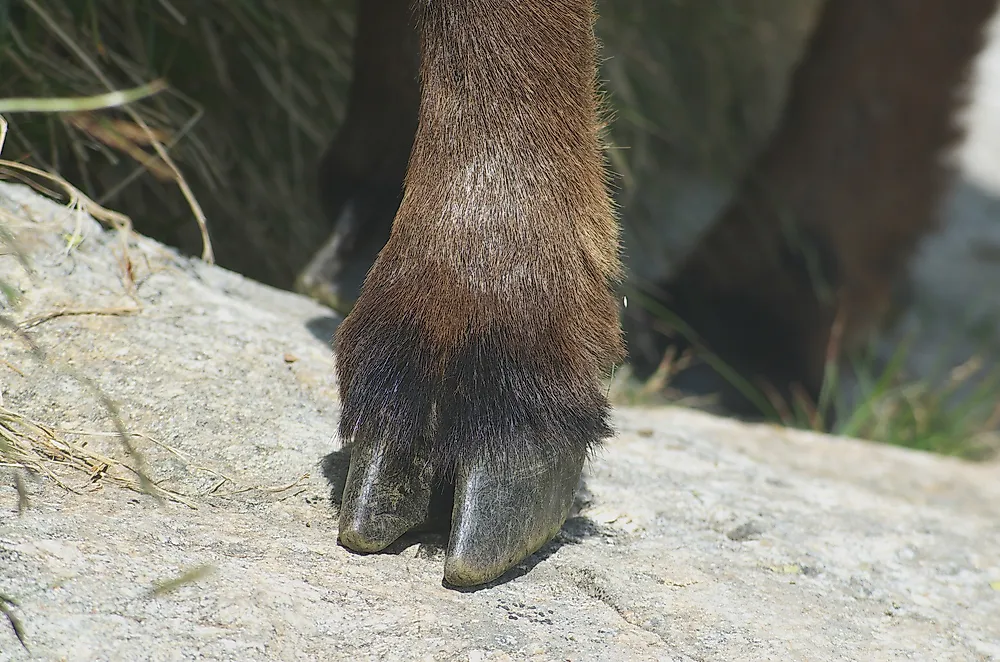What Is An Ungulate?

An ungulate is a hoofed animal. It is a member of a group of huge mammals which includes even-toed ungulates like hippopotamuses, camel, deer, pigs, and cows and odd-ungulates like rhinoceros and horses. Ungulates use their hooves to sustain their body weight while walking. Most of them are herbivores with some using specialized bacteria to break down cellulose like in the case of ruminants. Ungulates reside in a wide array of habitats including rivers, plains, and jungles.
History
Initially, the term ungulata referred to two orders; the odd-toed (Perissodactyla) and the even-toed (Artiodactyla) ungulates. Over time, Ungulata expanded to include seven extant mammalian orders with some lacking hooves. These orders included Cetacea, Proboscidea, Sirenia, Hyracoidea, Tubulidentata, Perissodactyla, and Artiodactyla. The expansion was based on a presumed family relationship, but recent advanced researches have disapproved this claim. Therefore, ungulate is currently considered to have no taxonomic importance, and its meaning has been reverted to its initial roots: mammals with hooves.
Evolution
Artiodactyla and Perissodactyla include most of the huge land mammals. The two groups appeared in the late Paleocene and spread to different continents. Numerous scientists believe the modern ungulates are the descendants of the condylarths. The earliest known member of condylarths was the Protungulatum which coexisted over 66 million years ago with the last non-avian dinosaur, but many scientists do not consider it to be an ungulate.
Perissodactyls are believed to have evolved from small sheep-like animals known as Phenacodontidae that had the anatomical features which their descendants inherited. The Phenacodontidae had diversified and spread to other parts of the world by the beginning of the Eocene period. Rhinos appeared in Asia while the tapirs and horses evolved in North America. The Artiodactyls evolved from the Arctocyonidae which were omnivorous which existed during the early Paleocene.
Characteristics of Ungulates
Terrestrial ungulates are herbivores with a majority of them being grazers; however, some ungulates like duikers, hippopotamus, peccaries, and pigs have an omnivorous diet. Some cetaceans like baleen whales are modern ungulates which are carnivores. The baleen whales eat smaller animals like krill and fish.
Hooves
Hooves are tips of the ungulate’s toes that are strengthened by keratin covering. Hooves are made up of a rubbery or hard sole, and a strong wall formed by thick nails rolled around the tip of the mammal’s toe. The ulna and radius of modern ungulates are usually fused along the mammal’s forelimbs. The hooves are the primary contact between the ungulate’s feet and the ground. Perissodactyls have mesaxonic feet which mean that their weight is usually distributed on the third toes of all legs. The artiodactyls have paraxonic feet with their weight distributed on both the third and fourth toes of each leg. Most artiodactyls have cloven hooves with two dewclaws situated further up their legs.
Teeth
Ungulates have developed specialized molars (the hypsodont and bunodont teeth) and reduced canines. Development of hypsodont is associated with the expansion of grasslands about 25 million years ago during the Miocene period. As the forest biome reduced, grasslands expanded thus creating more niches for the ungulates. Other ungulates like ruminants and camels have a dental pad instead of the upper incisors.











